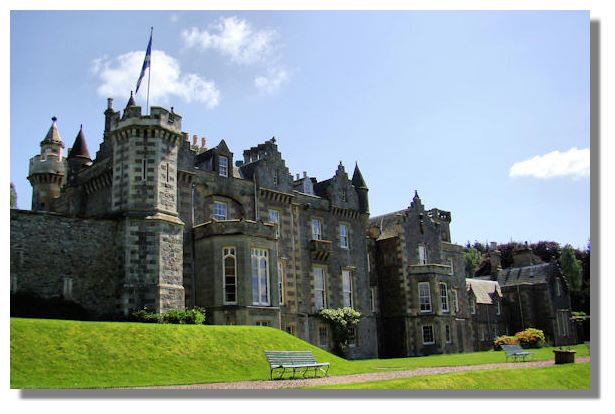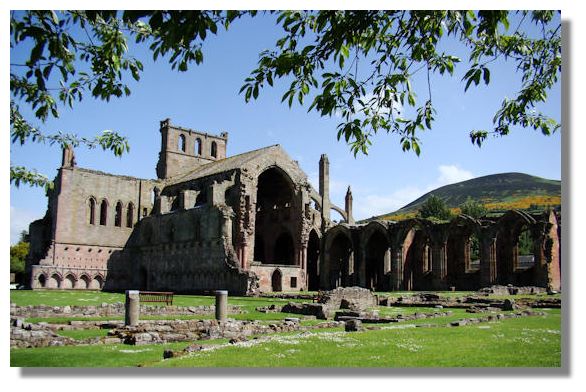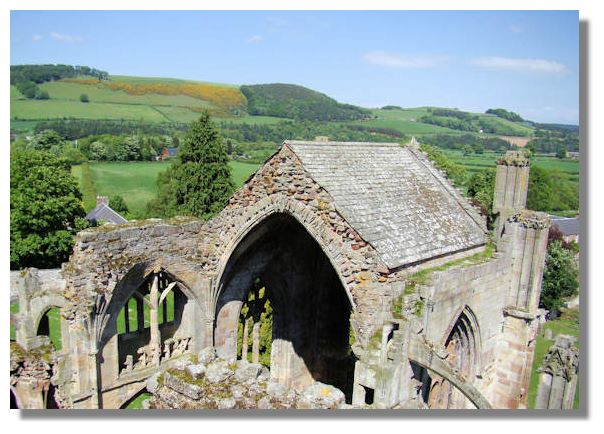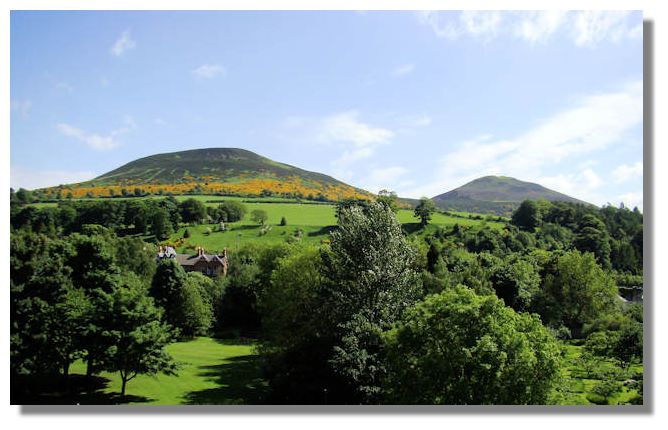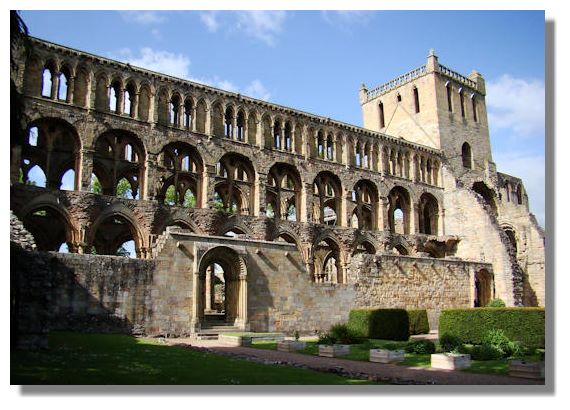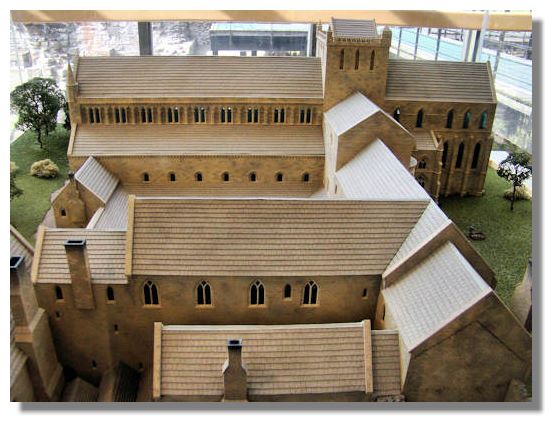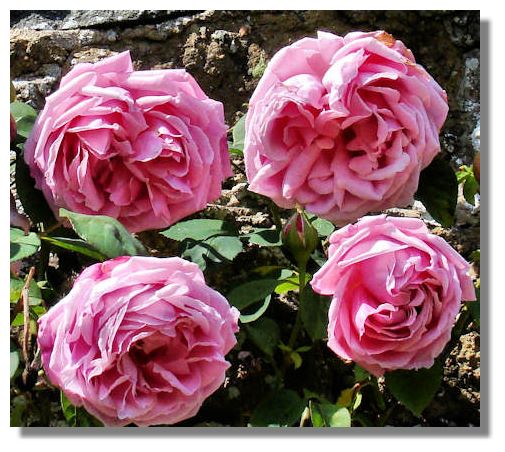The Rampant Scotland Newsletter includes a number of photographs which illustrate the weather and the seasons, plus the flora and fauna of the current week around Scotland. This separate "colour supplement" displays some more pictures, in a larger format. Here is this week's crop of Scottish views!
Abbotsford has been described as "Sir Walter Scott's greatest historical novel" as well as "an architectural monstrosity" and "a fantasy." Scott was involved in every detail of the building (beside the river Tweed near Melrose) and its furniture - and his reading glasses are still to be seen in his writing desk in his study. Sir Walter (1771-1832) described Abbotsford as his "conundrum castle". Now a major tourist attraction, it was owned until recent years by descendants of the famous novelist and historian. It is now looked after by a charitable trust - they are already making great strides in improving the facilities for tourists.
A monastery at Old Melrose, to the east of the present town of Melrose, was established around 650AD. But it was King David I who invited Cistercian monks in 1136 to rebuild the abbey (the original had been destroyed by Kenneth MacAlpin 200 years earlier) but they decided to create a new building at Little Fordell (now Melrose). It eventually became one of Scotland's wealthiest medieval monasteries. But the peace of the abbey was shattered in 1296 with the invasion of Scotland by King Edward I of England and again in 1322 when Edward II sacked the building. Robert the Bruce assisted in the rebuilding of the abbey and his heart was buried there.
On previous visits to Melrose I hadn't noticed a narrow door that led to a spiral staircase that led up to a platform on the roof of the abbey, next to the bell tower. It gave a close up view of how the roof was basically constructed from rubble mortared together beneath the slates.
The viewing platform at the top of Melrose Abbey also gave a fine view of the Eildon Hills - encircled by yellow gorse at this time of year. It was Sir Walter who wrote that it was Michael Scott "the Wizard" who "cleft the Eildon hills in three and bridled the river Tweed with a curb of stone". Michael Scott was an important philosopher at the Court of the Holy Roman Emperor, whose writings and translations were valued around Europe in the 13th century. His involvement in alchemy, astrology and astronomy gave him a reputation for being a "wizard" which entered the mythology of Scotland, particularly in the Border area. Sir Walter Scott enhanced his reputation when he wrote about him in his ballad "The Lay of the Last Minstrel". Sir Walter describes in graphic detail in his poem that Michael Scott and his book of wizardry were buried "on a night of woe and dread" in Melrose Abbey - and who would dare argue?
King David I founded the Augustinian priory of Jedburgh on the banks of the Jed Water in 1138 (or possibly earlier) to demonstrate to his own subjects - and to those in England - that he could create a magnificent building in the southernmost part of his kingdom. It took over 100 years to complete the abbey but shortly after, the devastation of the "Wars of Independence" swept through the Borders (and beyond) as King Edward I and his successors regarded destroying castles and abbeys alike as ways of demonstrating who was in charge. Jedburgh was badly damaged and rebuilt several times but the final crunch came in the 1540s when King Henry VIII demanded that his son, the future Edward VI of England (aged 10) should marry Mary Queen of Scots (then aged 5) - a time known as the "Rough Wooing". Soon after that, Scotland went through a period of religious reformation which saw an end of the dominance of the Roman Catholic Church - with all its symbols, including abbeys and monasteries. So Jedburgh and many other similar buildings were never rebuilt.
A model of Jedburgh Abbey in the excellent Historic Scotland visitor centre beside the building gives an idea of the scale of the original building. Its position, on the steeply sloping banks of the river, allowed the monks to create the huge cross-shaped plan of nave, presbytery and transepts in a prominent position while the cloister, chapter house, cellars and other accommodation could be built on lower levels - leaving the flowing arches of the nave to dominate the site. The ruin of the abbey is visible through the windows.
There is a small garden next to Melrose Abbey (not much there at this time of year though) and the walls enclosing the abbey grounds have lots of climbing plants on them, including some magnificent rambling roses. This quartette all came into flower at the same time to create this striking montage.If you want to look back at earlier editions of this Colour Supplement, there is an Index Page
